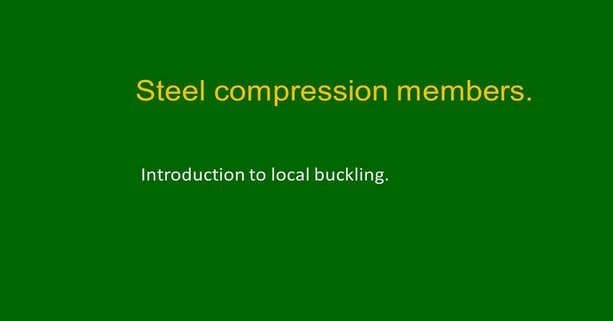Introduction to Local Buckling-part-1.
We will start a new subject which is local buckling for columns.


, we have been through the subject of local buckling for beams and have talked about the coefficient of local buckling for both flange and web for beams and talked about the general condition. There are three types, compact, noncompact, and slender sections.
This is a copy of table-2-4 for the various types of Applicable ASTM specifications for the various shapes of steel, from which we can get the yield stress and Fult, the tensile stresses in KSI.
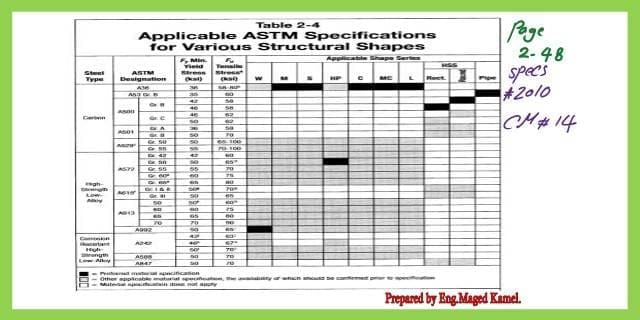

Classification of a compression member into stiffened and unstiffened parts.
In the Local Buckling-part-1, we will have a look at a cross-section for a column, from which we can see a bulged section at the flange that includes localized buckling also there is another picture that shows the flange and the other part is for the web buckling for the local buckling theory. Any column consists of a series of intersection plates, one plate resembles the upper flange and the second plate is for the web, and the third one for the lower flange part
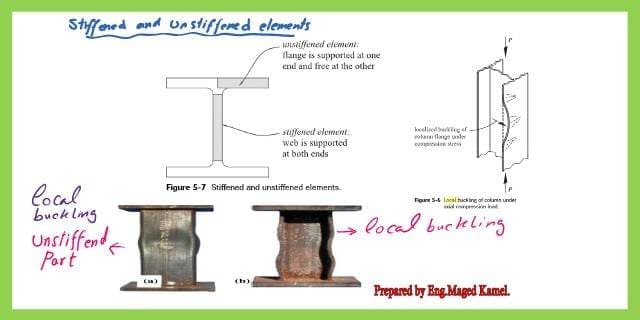

The upper hatched part is on the right side, which is a part of the flange that is called an unstiffened element, the reason for that is because it is free on the edge but supported with the web on the other side.
In the Local Buckling-part-1, the flange is Unlike the web, which is stiffened on both sides. That is why we have the definition of stiffened and unstiffened for columns.
The site with the shown link, Chapter 6 – Buckling Concepts, Local Buckling explained the general buckling is for the whole column and is also applicable on all beams.
The second picture shows the behavior of the stiffened plate, acted upon by compression forces; due to fixation from the two sides, it deflects in the longitudinal direction. At the same time, for the unstiffened, it is warped in the longitudinal direction according to t the Condition of the edges, whether hinged free, free. This is the picture link.
The third shape is for the unstiffened elements, for the wide flange I beam the unstiffened is shown with the white color at the left side, half of the bf flange, and with the thickness of t flange.
The second shape is for the c channel, for which the unstiffened section width is half of the flange width, and its thickness is the flange thickness, the third shape is for the t section, the unstiffened part is half of the flange width. The fourth shape is the same. the vertical plate, web, can be also unstiffened since it is attached on one side to the upper flange and free from the bottom side. also, the angle is an example of an unstiffened element.
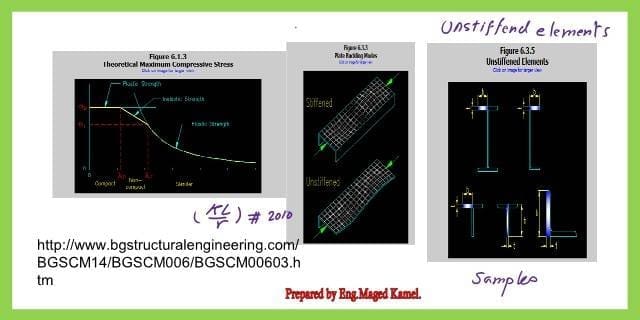

Local buckling-part-1 stiffened parts of the steel column.
This is the picture link for the unstiffened elements for a more clear view.
For the shapes of the stiffened parts included in the web of w section, the section is fixed from the top flange and bottom flange, the length is the height of the web minus the 2 kd value, where kd is the distance from the rounded part to the other rounded part, and the thickness is the web thickness.
While for the box section, two parts are considered stiffened with different widths and lengths, marked white. The W flange has a plate welded to the top flange; the plate can be considered a stiffened plate, the last shape for a box with two cells, for which the marked with white is a stiffened part with width b from the right and left. This is the picture view.
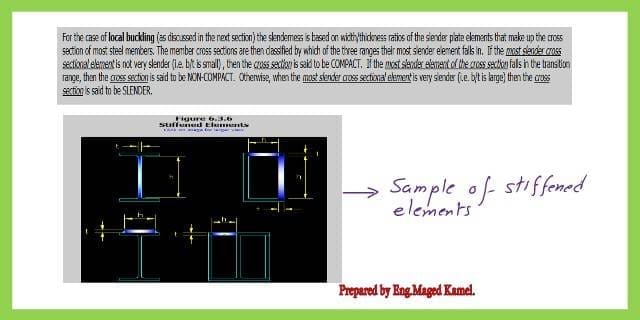

The next post is Number 10a-Easy study of Local Buckling-part-2.
For a valuable resource, please visit the following link: Concentrically Loaded Compression Members.

